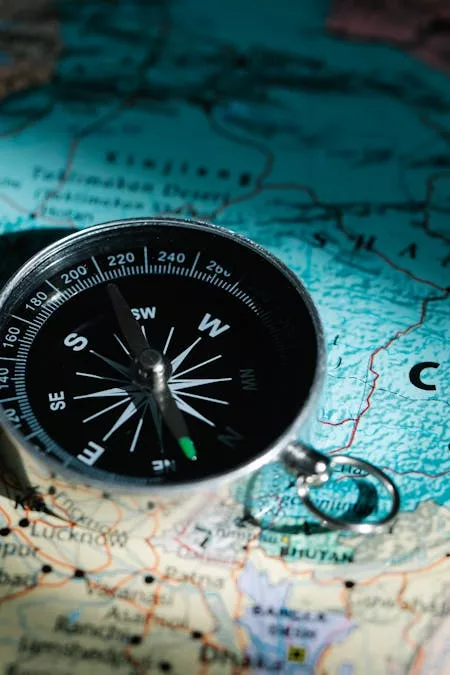
When you’re out on a trail, far from phone signals and GPS coverage, a magnetic compass can be a lifesaver. This simple yet powerful tool has been guiding explorers, sailors, and hikers for centuries. But what is a magnetic compass, how does it work, and why should you carry one on your hikes? Let’s break it down.
How a Magnetic Compass Works
At its core, a magnetic compass is a navigation tool that uses Earth’s magnetic field to point north. Inside the compass, there’s a small, magnetized needle that freely pivots and aligns itself with Earth’s magnetic field. One end of the needle (usually painted red) always points toward magnetic north.
Now, here’s where things get interesting—magnetic north and true north aren’t the same. True north is the geographic North Pole, while magnetic north shifts slightly over time due to changes in Earth’s magnetic field. To navigate accurately, hikers need to account for this difference, known as magnetic declination (more on that in another post!).
A Brief History of the Magnetic Compass
The magnetic compass has been around for a long time—over 2,000 years, in fact! It was first developed in China around the 2nd century BC, initially used for fortune-telling rather than navigation. By the 11th century, Chinese sailors were using compasses to navigate the seas, and European explorers adopted the technology soon after.
Over time, compasses became more refined, leading to the modern hiking compasses we use today. Even with all our digital gadgets, the trusty compass remains an essential tool for outdoor adventurers.
Parts of a Magnetic Compass
A compass might look simple, but each part plays a crucial role in navigation. Here’s a quick breakdown of what you’ll find on a typical hiking compass:
- Magnetic Needle: The most important part! This floating needle is magnetized and always points toward magnetic north.
- Baseplate: A transparent, flat plate that makes it easy to use with a map.
- Rotating Bezel (Compass Dial): The circular dial marked with degrees (0–360°), which helps set and follow a bearing.
- Direction-of-Travel Arrow: Found on the baseplate, this arrow points the way when following a set direction.
- Orienting Lines and Arrow: Inside the bezel, these help align the compass with the map’s north-south lines.
- Declination Scale (on some models): Helps adjust for the difference between magnetic north and true north.
Why Every Hiker Should Carry a Compass
So, why bother carrying a compass when you have a GPS or a smartphone? Here are three solid reasons:
- It doesn’t need batteries : A compass won’t die on you like a phone or GPS device.
- It works anywhere: No signal? No problem. A compass works deep in the wilderness, no matter the conditions.
- It’s a vital backup tool: Even if you rely on a GPS, knowing how to use a compass is a valuable skill in case technology fails.
I use a Silva compass, here is a link where you can purchase one.
My Final Thoughts
A magnetic compass is one of the most reliable navigation tools a hiker can carry. It’s lightweight, never runs out of power, and can help you find your way in the most remote places. If you’re serious about hiking, learning how to use a compass with a topographic map is a skill worth mastering.
Next time you hit the trail, bring a compass—it might just be the most important piece of gear in your pack! Happy Hiking!
Do you have experience using a compass? Share your thoughts or ideas here.
